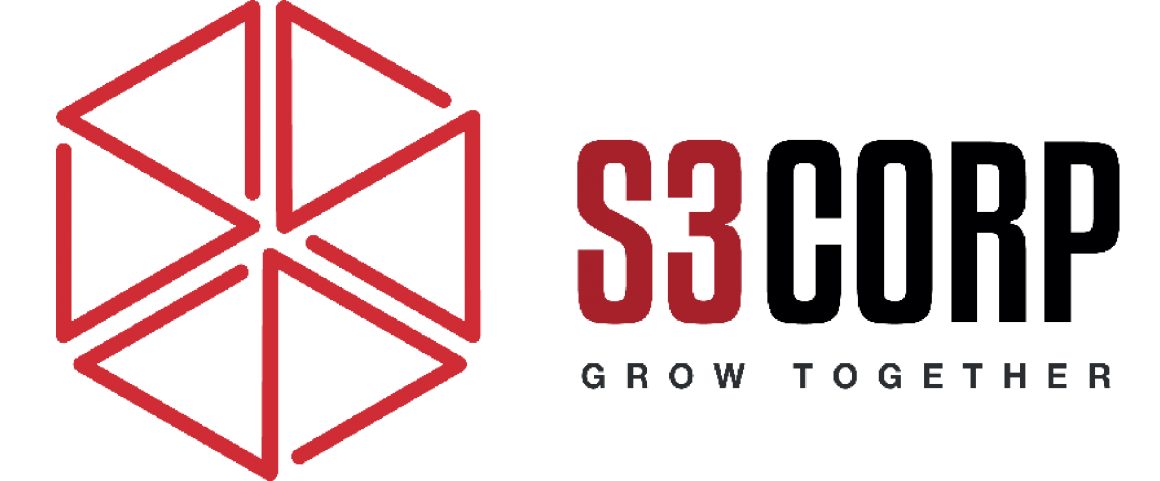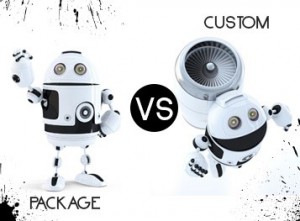How to Decide between Off-the-Shelf and Custom Software
— July 28, 2015When selecting software for your business, the decision between off-the-shelf and custom software can be straightforward for some industries. For example, an accounting firm may find that existing, packaged software meets most of its needs. But in many other industries, the choice is not so clear-cut. Many businesses, after using various software products, may develop a negative view due to past experiences with inadequate or overly complex systems. This history of frustration can influence decisions, even if it’s not the best choice for their current needs.
As Matt Noggle, Custom Software Practice Leader at Aptera, suggests, businesses often enter these decisions with preconceived notions. “What you should go with depends on your needs and your situation, so having a set idea like that can get you in trouble,” he says. In fact, there isn’t a one-size-fits-all answer. Even industries like accounting, which might seem suited to off-the-shelf software, might require custom solutions for specific needs. Custom software offers flexibility, while packaged solutions come with limitations. The decision should be based on the specific needs of the business and the functions it requires.
Functionality: Do You Need More Than What’s Already Available?
A common reason to opt for off-the-shelf software is that it often meets business needs right out of the box. It’s designed for a broad user base, making it cost-effective and fast to implement. For most businesses, it makes sense to avoid reinventing the wheel. Recreating software that already exists—like a word processor or a customer relationship management system—can be a costly and unnecessary exercise. If there’s a readily available product that does exactly what you need, a custom project might not be justifiable.
In the case of accounting software, for instance, there are many products that cover the range of functions accountants typically need. Developing a custom solution would require significant investment in development, quality assurance, and long-term maintenance, which might not make sense when a reliable off-the-shelf product already does the job. Matt Noggle highlights that, “The QA [quality assurance] testing alone would take a really long time. The off-the-shelf stuff is cheaper because it’s basically pooling the resources of all the companies who buy it, and it lets them all avoid the risk.” Therefore, if your needs align with an off-the-shelf product, the simpler, faster, and cheaper option is often the best.
However, it’s also possible that an off-the-shelf solution will come with features you don’t need. This can result in paying for functionality that your business won’t use, as well as forcing your employees to navigate a more complex system than necessary. For instance, an accounting package might offer modules for payroll, inventory management, and project tracking that your business doesn’t require. In these cases, a custom solution may better fit your needs, offering only the features you’ll actually use, without the clutter.
Complexity: How Simple or Complex is Your Business Workflow?
Another key factor in deciding between off-the-shelf and custom software is the complexity of the solution you need. Some off-the-shelf software packages come with a vast array of features and tools. While they can be highly functional, they can also be unnecessarily complex for businesses that only need a fraction of those tools. Matt Noggle points to SAP, an enterprise resource planning (ERP) system, as an example. “SAP does a lot of things, and it can be a really great suite of tools,” he says, “But it requires users to go through a lot of training. And if you’re not using all those tools, it’s easy to get lost.”
For businesses that only need a small subset of functions from a comprehensive ERP system, the complexity of such software can create confusion and inefficiency. If users only need basic features but are faced with a system full of unnecessary tools, the user experience suffers. In these cases, custom software development can simplify things. A custom solution can be designed to include only the essential features, reducing complexity and improving user experience. By building your own software, you ensure that it fits the unique needs of your business without any excess.
Integrations: Can Your Software Talk to Other Systems?
Once you’ve chosen a software product, another critical question arises: how well will it integrate with your existing systems? Modern businesses rely on a range of tools, from customer relationship management (CRM) systems to human resources platforms, and they need software that can seamlessly connect with these applications. However, many off-the-shelf software products are not designed with flexibility in mind. They may require custom development to connect to other systems, which can negate any initial savings in time or resources.
Additionally, some software providers do not offer the necessary Application Programming Interfaces (APIs) for integration. Without APIs, developers cannot create the necessary connectors to link your new software with existing platforms, creating a major roadblock. If seamless integration is crucial for your operations, custom software may be the better choice. With custom software, integration is part of the planning process, ensuring that all your systems work together from the start.
Scalability: Can Your Software Grow With Your Business?
As your business expands, the software you use must be able to keep up. Many off-the-shelf products come with limitations in scalability, either in terms of user capacity or functionality. For example, if you’re using software on-site, you may have to purchase additional Client Access Licenses (CALs) as your team grows. If your business expands rapidly, this could become expensive, especially when you factor in the cost of adding more servers or infrastructure to handle the increased load.
Software as a Service (SaaS) solutions, which are delivered via the cloud, tend to be more flexible in this regard. Many SaaS providers offer tiered pricing, allowing businesses to pay for the number of users they need and scale up as the business grows. However, the per-user cost often increases as the number of users rises. This means that while SaaS options can be more scalable in terms of user count, they may become more expensive over time.
Custom software offers more control over scalability. If you build your own solution, you can adjust it as your needs change without worrying about additional licensing fees. The software can be designed to grow with your business, with updates and changes made as necessary. While you may still need to add infrastructure to handle increased usage, you won’t be bound by the limitations of a pre-packaged solution. Custom software allows for a more tailored approach to scalability, giving you greater control over how it grows and adapts to your changing needs.
ROI Timetable: What is the Long-Term Investment?
One of the most important considerations when deciding between off-the-shelf and custom software is the return on investment (ROI). Off-the-shelf software typically requires a lower initial investment but may incur ongoing costs for updates and support. For businesses that need to stay compliant with privacy or regulatory requirements, maintaining up-to-date software can become expensive. Even though updates may be included for a certain period, periodic payments for new versions and features can add up over time.
On the other hand, custom software requires a larger initial investment, including the costs of development, testing, and deployment. However, if the project is successful, custom software can save money in the long run. By meeting your business’s exact needs and scaling with growth, custom software can reduce inefficiencies and eliminate the need for additional licenses or unnecessary features. To ensure this outcome, comprehensive planning is essential, as is a reliable development process. Agile development methodologies, like Scrum, can reduce the risk of failure and ensure that the final product meets your expectations.
In addition, custom software offers the flexibility to address compliance issues more directly. While off-the-shelf software may require costly updates to stay compliant, custom solutions can be developed with compliance in mind from the start. This can provide long-term savings, as the software can be more easily updated to meet changing regulations.
Making the Decision: Choosing the Right Solution for Your Business
Choosing between off-the-shelf and custom software is rarely a straightforward decision. It requires careful consideration of your business’s specific needs, current software environment, budget, and long-term goals. The key is to assess the unique requirements of your organization and determine which type of software will most effectively meet those needs.
Research is crucial, whether you’re deciding on a packaged solution or opting for custom development. Understanding the features, costs, and limitations of each option will help you make an informed decision. If you decide to go with custom software, it’s important to partner with a development firm that prioritizes thorough planning and clear communication throughout the project. By doing so, you’ll increase the likelihood of a successful outcome and ensure that the final product truly addresses your business’s needs.
In conclusion, the decision to choose between off-the-shelf and custom software depends on a wide range of factors. While off-the-shelf solutions may be more affordable and faster to implement, custom software offers greater flexibility, scalability, and control over your business’s unique requirements. Carefully considering the specific needs of your business will ensure that you make the right choice for your organization.







